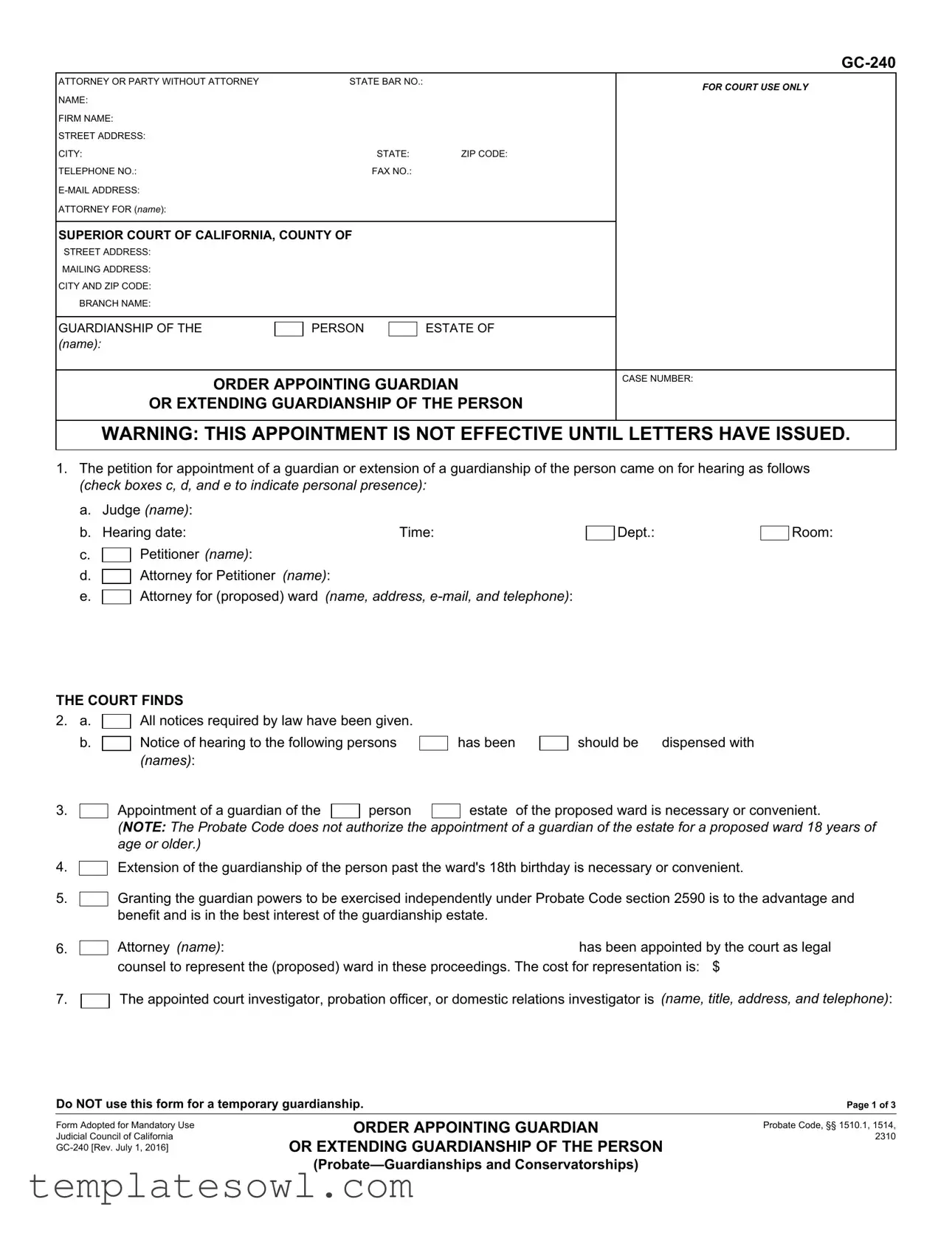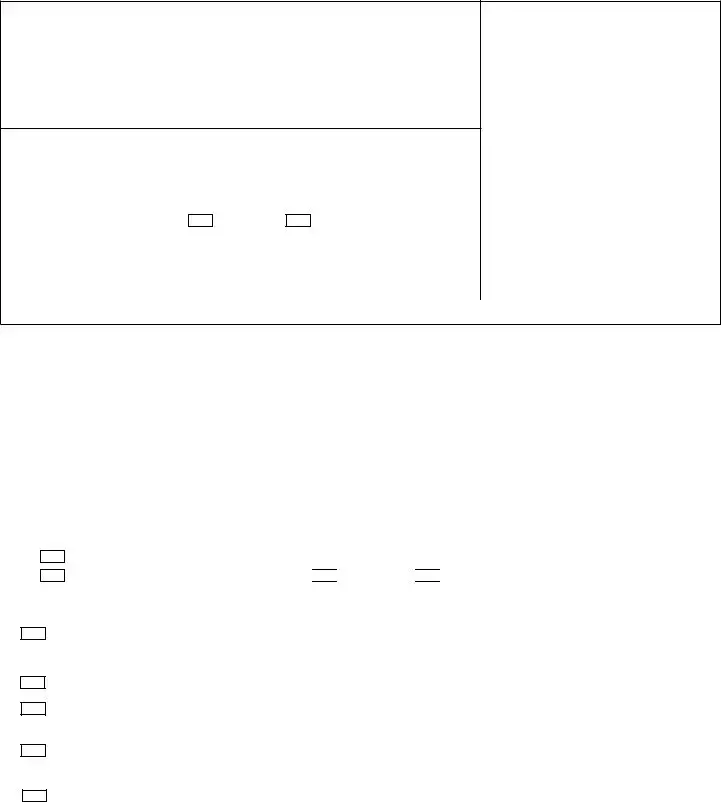What is the California GC-240 form used for?
The California GC-240 form is used to appoint a guardian for an individual or to extend an existing guardianship. It is specifically intended for use in cases involving guardianship of minors or individuals who are unable to oversee their own affairs. This form is crucial in ensuring that the necessary legal processes are followed for the benefit of the person in need of guardianship.
Who can file the GC-240 form?
Any adult can file the GC-240 form as a petitioner, provided they have a legitimate interest in the welfare of the proposed ward. This includes parents, relatives, or other concerned individuals. An attorney may also file the form on behalf of the petitioner if legal representation is required.
What information is required on the GC-240 form?
The form requires detailed information about the petitioner, the proposed guardian, and the individual who needs guardianship. This includes names, contact information, and addresses. Additionally, the form asks for the reasons for the guardianship request and requires compliance with notice requirements to inform relevant parties about the proceedings.
Is there a specific age limit for filing the GC-240 form?
Yes. The form is meant for individuals under 18 years of age who cannot care for themselves. For individuals 18 years or older, a different legal process must be followed as the Probate Code does not authorize appointing a guardian of the estate for them via this form. If guardianship is needed beyond the age of 18, an extension of guardianship can be requested.
What occurs during the hearing for the GC-240 petition?
During the hearing, the court reviews the petition to ensure all legal requirements have been met. The judge will listen to any testimony, consider submitted evidence, and check that all notifications have been properly issued. If the court finds the need for guardianship is justified, it will issue an order appointing the guardian.
What happens if the court grants the GC-240 petition?
If the petition is granted, the court issues Letters of Guardianship after the appointed guardian qualifies. This formalizes their authority to act on behalf of the ward. Additionally, the guardian may be granted specific powers and responsibilities as outlined in Attachments to the order.
Can the appointed guardian manage the ward's finances?
The GC-240 form does allow for financial management, but it depends on the specific terms granted by the court. The guardian might have to get specific court orders to take possession of money or property. Furthermore, if a guardian is appointed for the estate, they may be granted certain powers to manage the ward's finances according to the terms of the order.



 has been
has been 
 should be dispensed with
should be dispensed with 

 (name)
(name)
 Notice of hearing to the persons named in item 2b is dispensed with.
Notice of hearing to the persons named in item 2b is dispensed with.
 Bond is not required.
Bond is not required. Bond is fixed at: $
Bond is fixed at: $ Deposits of: $
Deposits of: $